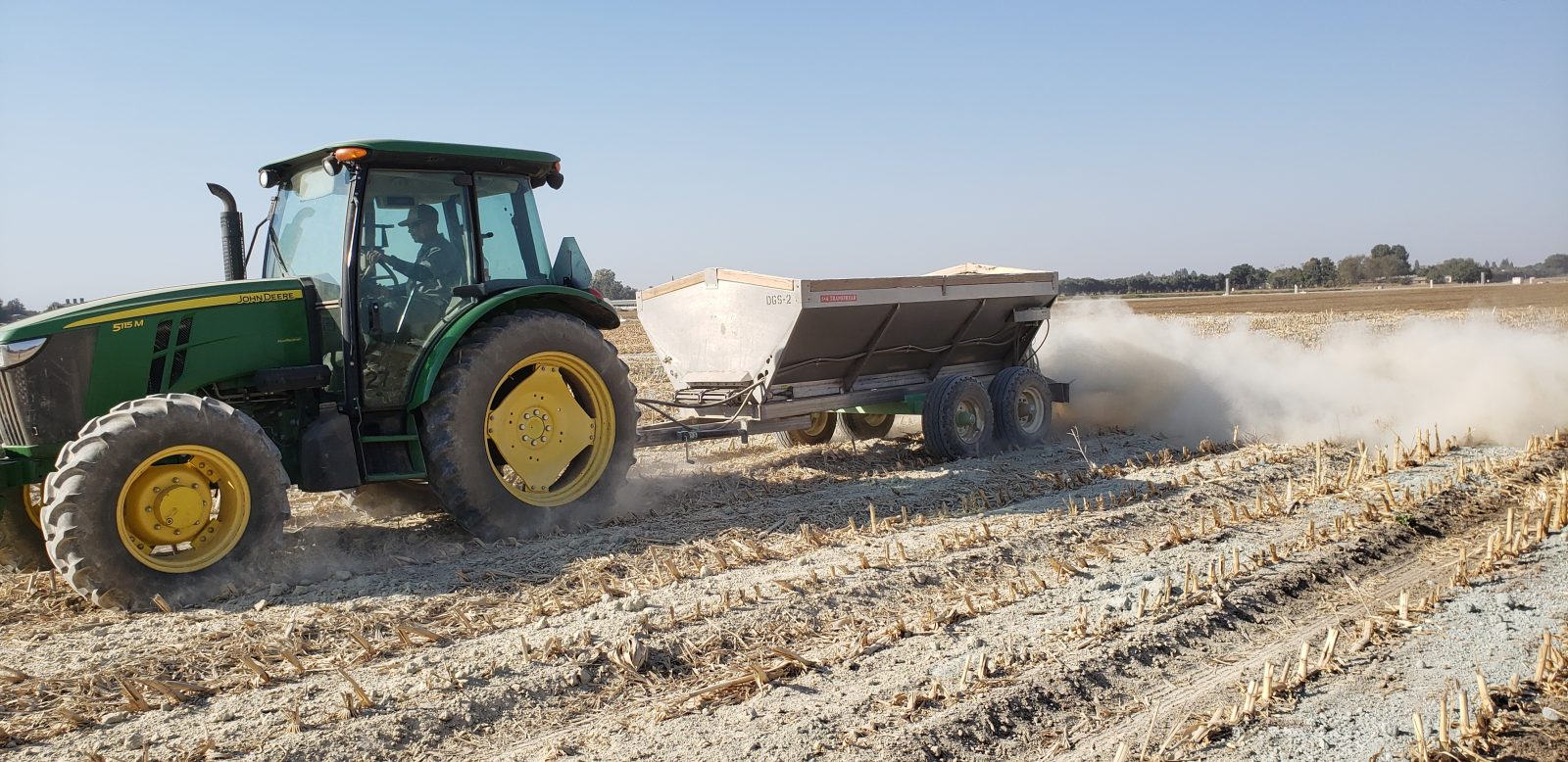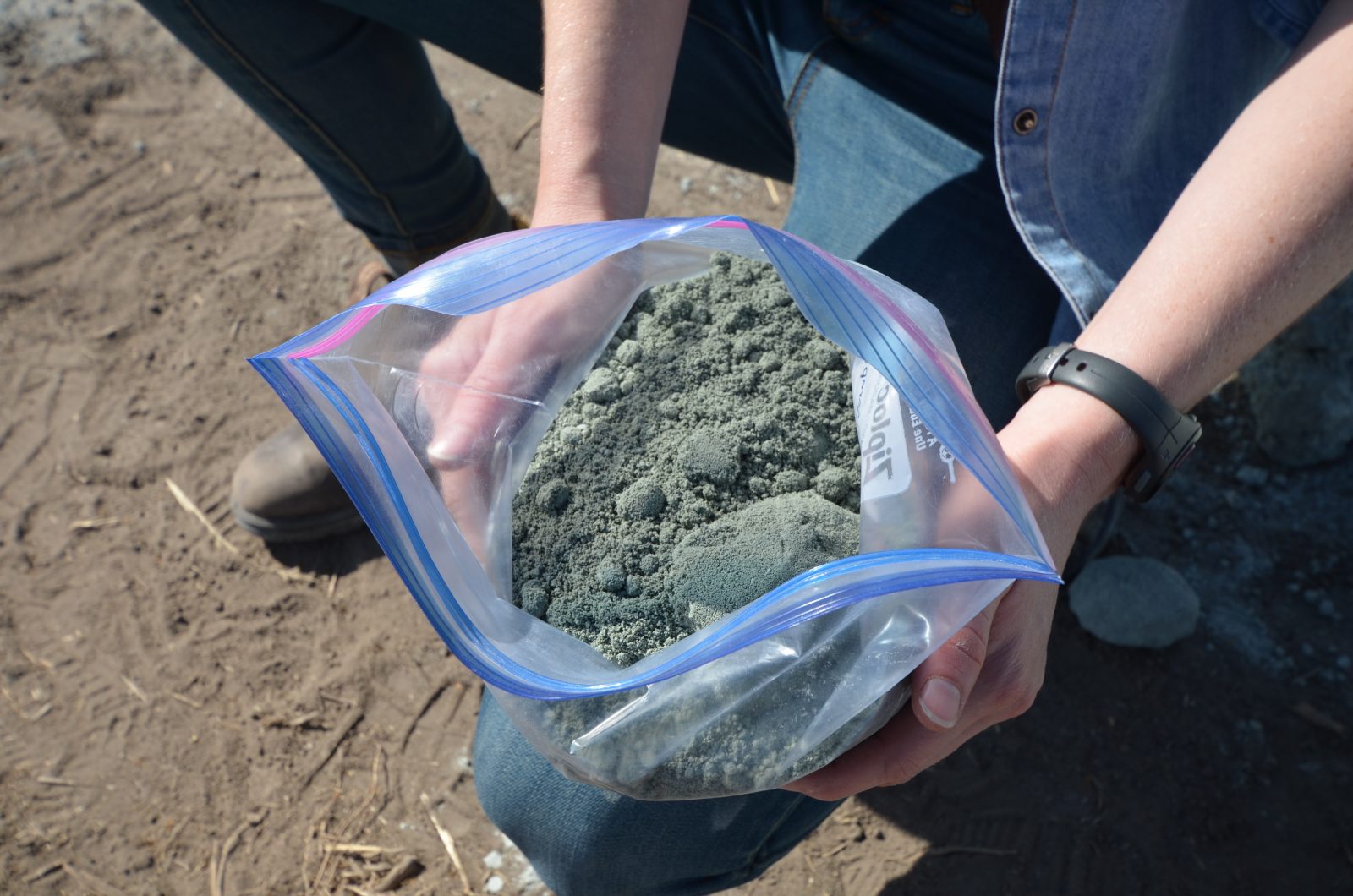What if one possible solution to the climate crisis lies beneath our feet? And what if it made farmland more fertile, used natural materials, and was being developed with Indigenous expertise?
Benjamin Z. Houlton and others at the Working Lands Innovation Center (WLIC) are confident they can make this happen. His team is exploring ways of accelerating soil’s natural ability to absorb atmospheric carbon dioxide, essentially making the ground a sponge for the stuff. That in turn could boost crop yields by as much as 29 percent, Houlton says, because plants rely upon that greenhouse gas to grow. He calls the process “carbon capture with benefits.”
We’re still a ways from it happening on a large scale, but researchers from the University of California-Davis, Cornell University, and other institutions are testing the idea by spreading pulverized rock on 100 acres of farmland in the Golden State and six acres in New York. They plan to publish findings later this year. “There are estimates that we could get 4 billion tons of CO₂ removed from the air each year if you put these kinds of rocks on our global croplands, which is about 11 percent of the Earth’s surface,” he says. That could create new financial markets for farmers, ranchers, and Indigenous people, with carbon offset credits they could then sell.
Houlton has spent much of his 15-year career studying the natural breakdown of rock into minerals over millennia, a process called enhanced weathering that captures atmospheric carbon dioxide. It has over eons deposited vast stores of carbon in the Earth, but occurs far too slowly to offset the volume humanity generates. Houlton’s team hopes to speed things up by using rock dust, which absorbs the gas at a faster rate than rocks due to its greater total surface area. Rock dust is a common mining and industrial byproduct, and the researchers also are experimenting with compost and biochar — readily available from agricultural and timber operations — to see if various combinations further expedite the process. The question is how these materials could be efficiently and sustainably transported to farms and applied to fields.
It’s an interesting idea being pursued by a coalition of scientists, farmers, and Indigenous tribes working alongside folks from the mining, timber, and compost industries. Some of the tests are being conducted on Southern California land managed and farmed by the Pauma tribe, which was already experimenting with carbon sequestration. “It could support what tribes were already doing in terms of land management,” says Beth Rose Middleton, a UC Davis professor who studies Native environmental policy and has been helping forge tribal partnerships with the WLIC.
Fix talked to Houlton and others at WLIC about how enhanced weathering can capture carbon, what other benefits it might provide, and the unusual partnership developing the technique. Their comments have been edited for length and clarity.
Q. What is weathering, and how might it help address climate change?
Benjamin Houlton, dean of the College of Agriculture and Life Sciences at Cornell University: Scientists have known for decades that rock weathering — the chemical breakdown of minerals in mountains and soils — removes carbon dioxide from the atmosphere and transforms it into stable minerals on the planet’s surface and in ocean sediments. But because this process operates over millions of years, it is too weak to offset global warming from human activities.

Emerging science shows that it is possible to accelerate rock weathering rates by spreading rock dust and other soil amendments on croplands. Rocks have all these nutrients that are constantly being released as they break down. Enhanced rock weathering could both slow global warming and improve soil health, making it possible to grow crops more efficiently and bolster food security. Ours is the first large-scale study to actually measure the carbon that’s drawn out of the atmosphere through enhanced weathering as these rocks break down in croplands. And we’re learning all sorts of cool things about the chemistry, the microbiome, the soil system, and how it all operates.
Q. Could this work on a global scale?
Houlton: What’s really cool about agriculture is it might be the only industry where you can put new material into the supply chain and have global distribution that’s ready to go. The infrastructure is already there because of the global distribution of things like fertilizer and seeds. You don’t have to sink a bunch of capital into it. If rock dust works — and I really think this one is a slam dunk, as our research shows that it really works — and we create the right carbon pricing tools, it’s ready to go. It’s something that any farmer could do. And there’s more than enough rock dust that has been produced over the past decade just sitting around of no use to get us the billions of tons of carbon removal on the planet if we started to deploy it.
Maya Almaraz, an ecologist, environmental scientist, and WLIC project manager: Before we can implement these practices on a large scale, we need more information about how much carbon these soil amendments can sequester across a variety of conditions. Soil amendments like rock dust have been shown to sequester carbon, but we’ve also been testing biochar and compost. We’re testing amendments on a variety of different cropping systems, like alfalfa, corn, olives, and almonds. We’re also testing them on a dairy site and on rangelands.
Q. Are there other benefits that this approach offers?
Houlton: We are seeing evidence for significant crop-yield benefits of between 10 and 29 percent — meaning more grain is produced when you add rock dust. Nutrients are constantly being released from the rocks as they break down, and these nutrients are vital to the plants and the microbes in the soil. They’re stimulating greater production.

Almaraz: These co-benefits are so important, especially in the absence of a federal carbon program. We hope they will incentivize farmers to actually use these amendments. One thing that’s really cool about this project is that we’re testing at large scales, and with amendments that have only been tried in the lab. To the best of our knowledge, no one else has tried combined soil amendments in the field before. It’s great to see these work on a large scale as opposed to in a jar or beaker.
Q. How did the WLIC come together? How are Indigenous tribes involved?
Connor Magee, WLIC graduate research assistant and a member of the Pala band of Mission Indians: I grew up here, and so I have a close relationship with the land. The legacy of the work that I do is in the interest of protecting it. More recently, I’ve trained in soil testing and conservation planning. But I consider myself a practitioner more than anything.
Ben’s so well-grounded and sincere, and I think that’s why I’m a part of the project. I could have left the first day, thrown my hands up and been like, “Oh, here’s another white guy who’s really full of himself, talking about how he’s going to fix everything.” But Ben’s doing the work that needs to get done for us to figure everything out. It’s year two of the project, we’ve had a lot of interactions, and time and time again he’s just proven to be an amazing human being.
Beth Rose Middleton, a professor of Native American Studies at UC Davis: Because the Pauma tribe had already won an award through the California Department of Food and Agriculture’s Healthy Soils Program for a carbon-sequestration farm — the first and only one awarded to a tribe — it seemed like a really good partner. Its agricultural operations are incredibly impressive.
There are tribal-specific land stewardship techniques that might lend themselves to carbon sequestration, such as forest thinning to protect against catastrophic fire. But I think there’s still a lot of work to do in terms of listening.
Keir Johnson-Reyes, a member of the Osage Nation of Oklahoma: I work for the Intertribal Agriculture Council (IAC). We focus on the sovereignty movement and on regenerative agriculture as a strategy for addressing climate change impacts. Ben asked me to review the WLIC proposal. It struck me as very innovative, and I was really glad that they were engaging representatives of tribal organizations very early on in the process. We also participated in a series of meetings dedicated to tribal input and to identify prospective partners from Indian country, such as Pauma, as I’ve got a longstanding relationship with that community.
We were consulted at key junctures of the development of the WLIC project, and that engagement has been maintained over time, which is very counter to the historical M.O. It feels like this is an approach that ally organizations are beginning to take: We are being engaged earlier in planning processes and being invited to the table at the inception of projects, not at the end. We’re finding in a lot of different instances, at the state and national level, that partnerships are being forged much earlier in the game, so to speak. Early engagement and clear communication is really key, and the growth of strong and resilient partnerships enables the realization of mutual benefits.
Houlton: The idea of working with tribes stems from traditional ecological knowledge, which we can bring to bear on climate challenges. A lot of tribes in the United States are radically underserved, to say the least. We want to see if there are pathways through uplifting them if they engage in climate-smart, carbon-smart practices, so we ask them what they care most about. If you listen, you learn, and if you learn, you create what we would consider enterprise-scale opportunities. We believe very strongly that we can learn from each other. That’s the basic principle.



